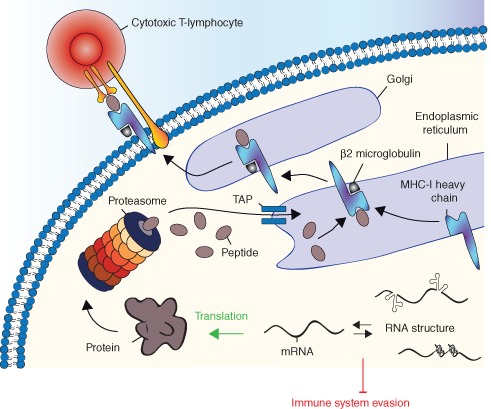Figure 1.

The MHC class I antigen presentation pathway. Once transcribed, viral mRNAs are translated into proteins that constitute the pool of MHC‐I restricted epitopes resulting from proteasomal degradation of nascent proteins and DRiPs. Degraded peptides are translocated into the endoplasmic reticulum (ER) by the transporter associated with antigen processing (TAP) where chaperones facilitate their binding to newly synthesized MHC‐I molecules for vesicular migration through the golgi to the cell surface. Cytotoxic T lymphocytes recognize viral antigenic peptides and initiate an immune response. Viruses that evade the immune system have evolved to interfere with key steps of the MHC‐I presentation pathway. Strategies that downregulate viral protein synthesis through translational control mechanisms can lead to immune evasion and subsequent latent infection.
